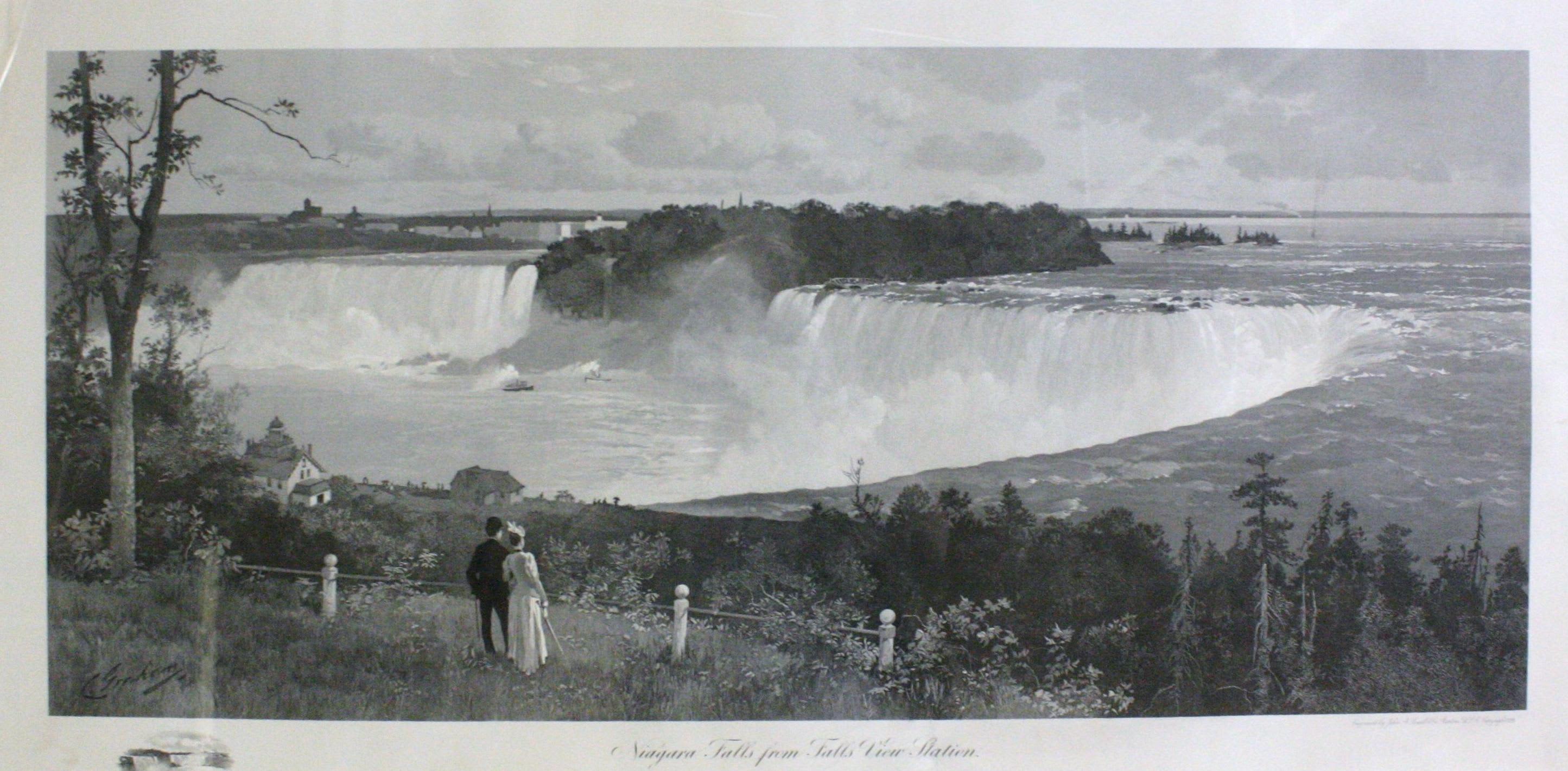The City of the Falls Project
The City of the Falls Project was a real estate venture which was developed by some of the most influential men in Upper Canada. They founded the City of the Falls Company and through it sought to establish a large residential city within view of the Falls. The original shareholders of the City of the Falls Company were Lieutenant-General John Murray, Thomas Clark, Samuel Street, James Buchanan, William Allan, John Plenry Dunn, Thomas Dixon and James Robinson. They professed two goals: to make money and to preserve the Falls from vandalism and commercial enterprises.
In 1832, the shareholders of the company purchased 400 acres of land from William Forsyth, a prominent businessman who had built the Pavilion Hotel at Falls View. The land was surveyed into lots and streets in 1833; the shareholders reserved choice property for themselves and offered the remaining land for sale by lottery in May, 1834. Individuals interested in obtaining property in the area were to be issued one ticket for every share which they purchased in the City of the Falls Company, and these tickets would later be drawn to determine ownership of the land.
Along with the proposed houses in the City of the Falls area, a number of community buildings and tourist attractions had also been planned for the area. The City of the Falls Company had intended to build public gardens, churches, schools, and a library. The main public building planned for the area was a huge bathing complex on the south side of Murray Street. Water would be diverted from the Niagara River at Table Rock and flow by gravity in large wooden pipes to the bathing area. Unfortunately, the water pressure caused the pipes to burst when the system was tested, and as they were not replaced, the bathing complex was never operational. The bath house was later used as a hotel, and as a girls' boarding school, and as a barracks for Canadian soldiers during the Rebellion of 1837. The bath house eventually burned down, although the date is unknown.
As few lots in the City of the Falls Project were sold, and fewer houses ever built, the venture was eventually abandoned as a dismal failure. The financial projections for the City of the Falls Project had been based on the travelling patterns of tourists who crossed the Niagara River in ferry boats at Buffalo and then came to Niagara in stage-coaches, by way of the Portage Road. However, when the railway replaced the stage-coaches as the primary means of transportation for tourists, the number of people arriving in Niagara Falls via the Portage Road was drastically reduced, resulting in the failure of the City of the Falls Project.
Although no trace of the City of the Falls Project has survived to the present, the names of the original shareholders of the project still identify the street names in "City of the Falls" or Falls View area.

Print, titled "Niagara Falls From Falls View Station" a lithograph by John A. Lowell out of Boston. Copyrighted 1893.The image shows the Niagara Falls as would be seen today from the Fallsview Casino. Table Rock building is below them, to the left of the image.